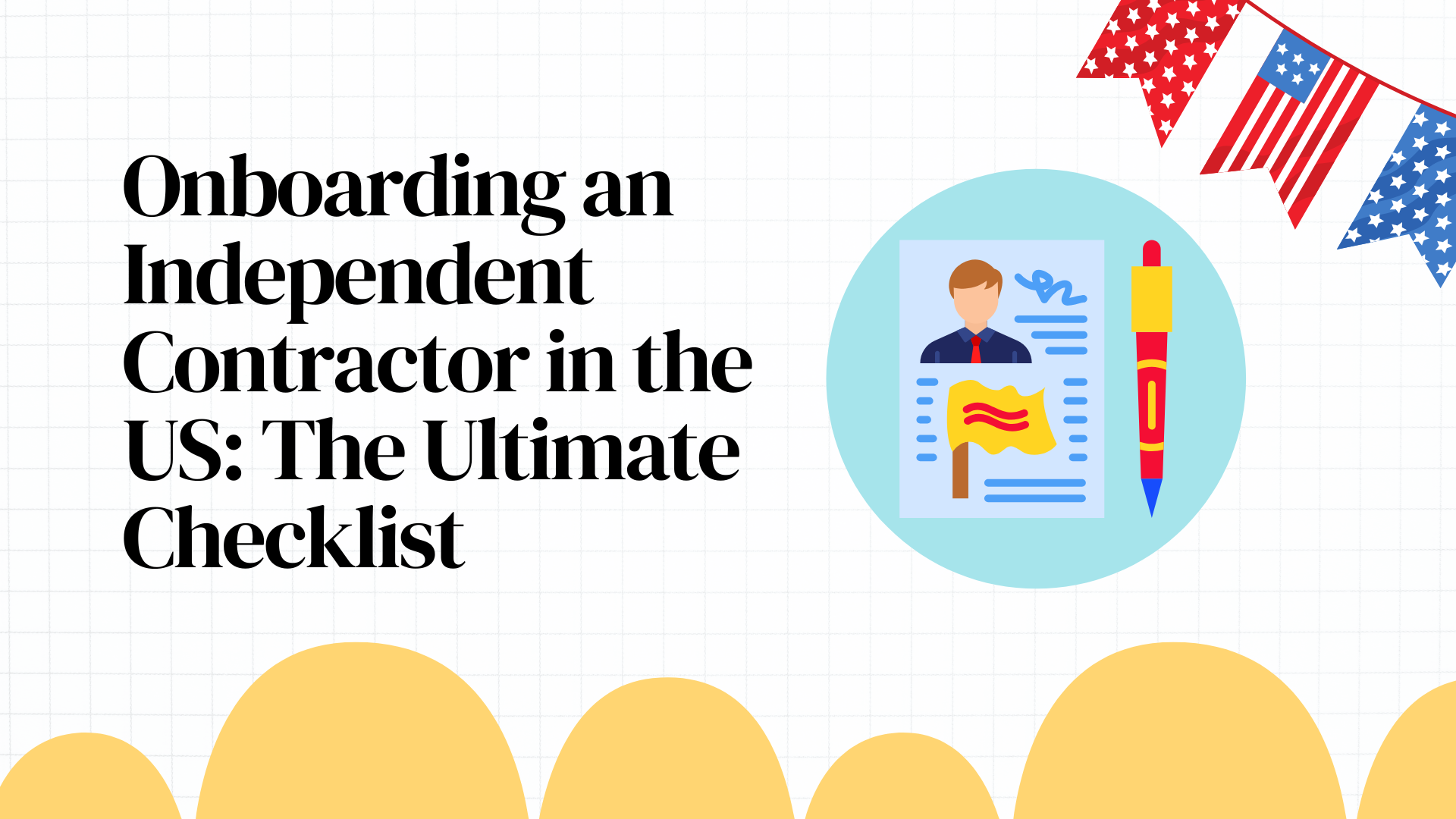When hiring a contractor in the US – whether you’re a US-based recruiter or hiring remotely from the UK – it’s vital to handle onboarding thoroughly. Contractors aren’t employees, so the compliance and process steps differ in several ways.
We’ve put together a step-by-step guide you can use as a practical checklist.
Step 1: Determine Contractor Status
The first step you would need to do is to confirm the worker’s preference in being treated as an independent contractor. If the worker does not want to be treated as an independent contractor, but you would like to classify them as such, various IRS and DOL tests must be analyzed for misclassification.
Here are 5 questions to help you determine the right onboarding process for your contractor.
Step 2: Define scope and draft contract agreement
Agree on deliverables, timelines, payment processes, contractor insurance requirements, indemnities, and responsibilities in writing. This would ensure clear expectations and legal protection.
An efficient contract should include the following essentials:
- Scope of work and clear deliverables
- Payment terms and rates (hourly, project-based, retainer, etc.). These should also account for different state requirements.
- Deadlines
- Intellectual property clauses (who owns the work)
- Confidentiality / NDA terms if needed
- Termination terms
Step 3: Collect the Required Tax Forms
Have the contractor complete IRS Form W-9. This provides their Taxpayer Identification Number (TIN), which is needed to issue a 1099-NEC at year-end.
Store W-9s securely and make sure they’re updated if the contractor’s info changes.
Step 4: Set Up Payment and Invoicing
When discussing the payment method, it’s important to agree in advance whether payments will be made by bank transfer, through a payment processor such as PayPal or Wise, or by check, and to clarify who will cover any transfer fees, especially for international transactions. Additionally, the invoicing process should be clearly defined by deciding how and when invoices should be submitted and setting a clear payment frequency, whether that’s weekly, bi-weekly, or monthly.
Step 5: Grant Access & Tools
- The contractor would need necessary access (accounts, software, project management tools).
- Limit access to only the systems needed.
- Get any data privacy agreements signed.
Finally, defining preferred communication methods can be very helpful – for example, Slack, email, or weekly calls.
Step 6: Tracking compliance documents
- Collect new W-9 periodically, typically yearly
- Track contractor’s insurance documents for expiration dates and collect new COIs as needed
Step 7: Stay Compliant with Reporting
If you pay a contractor $600 or more in a calendar year, you are required to issue a 1099-NEC by January 31st, filing it with the IRS and providing a copy to the contractor. To stay compliant and organized, it’s essential to keep thorough records by carefully tracking all payments and invoices and securely storing all agreements and relevant forms.
How an EOR can help
An experienced Employer of Record can take care of all seven steps for you and ensure that the contractors you place are onboarded compliantly. Lead & Gain offers solutions specifically tailored to support recruitment businesses and their unique needs. If you’re ready to start placing contractors, get in touch with the team today.

